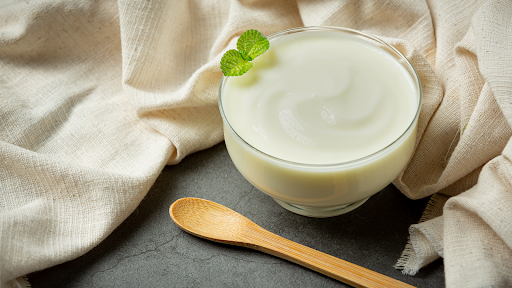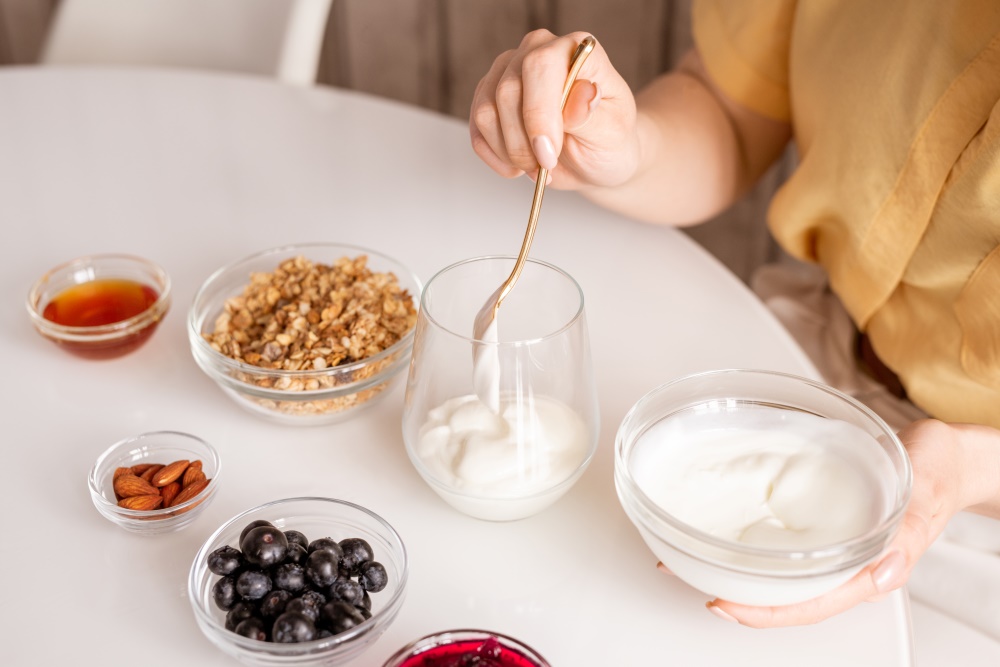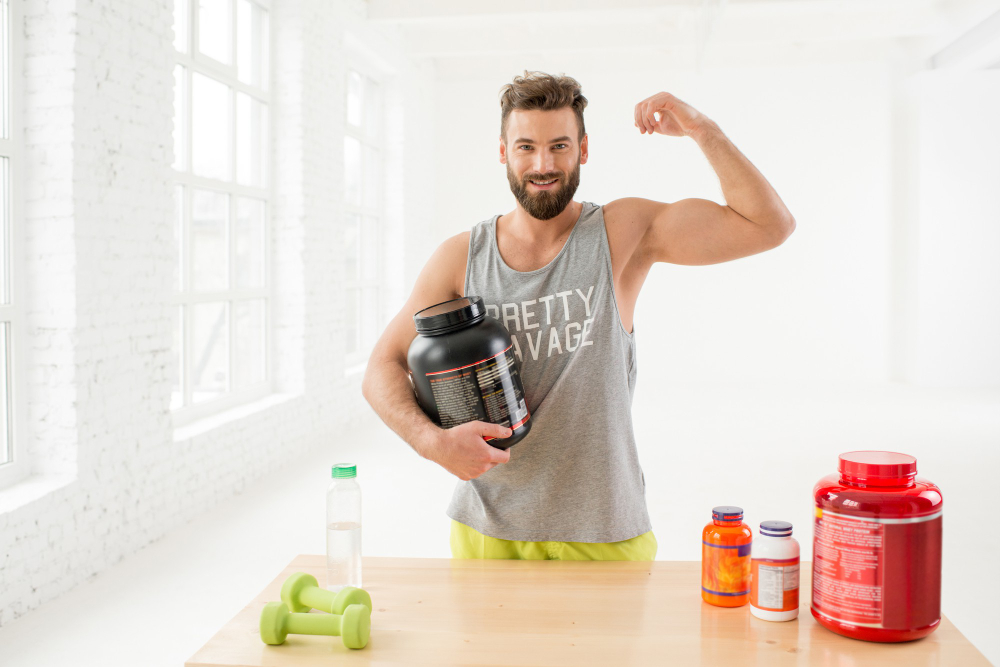Did you know that homemade yogurt contains a wealth of beneficial bacteria that can dramatically improve your gastrointestinal health? In fact, homemade yogurt can provide a ton more healthy bacteria than a typical probiotic pill!
Since 90% of serotonin (the happy hormone) is produced in the gut, yogurt is great for the body and mind. Not just this, it is packed with essential nutrients like calcium for strong bones, phosphorus for cellular health and potassium for proper nerve function. You will also find a bounty of vitamins, including A for eye health, B2 for energy metabolism and B12 for nerve function and blood cell formation.
So, we have crafted this comprehensive guide to help you understand the ins and outs of yogurt making at home and equip you with the knowledge and recipes to create delicious, nutritious, probiotic-rich treats in your own kitchen.
How to Make Yogurt at Home
The first question that might pop into your mind is “why make yogurt at home?” The answer is simple: it is cost-effective and healthier. You can control the ingredients, avoid preservatives and experiment with flavors. With just two ingredients—milk and a yogurt starter—you can create creamy, delicious and probiotic rich yogurt at home. No fancy equipment required! This simplicity is what makes homemade yogurt so appealing.
Here’s a step-by-step guide to help you make it at home easily:
What You Need:
- Milk – Half-and-half is best for creamy yogurt, but you can use whole, 2%, skim or plant-based alternatives. Plant-based milks will result in a runnier yogurt, but you can always add a thickener or strain it.
- Yogurt Starter – Use plain yogurt with live cultures or a powdered starter.
- Sweeteners & Flavoring – Honey, vanilla, or fruit puree for added taste.
Step-by-Step Instructions:
- Start by washing all jars and lids thoroughly, either by hand or in the dishwasher. This helps keep bad bacteria away from your yogurt.
- Pour the milk into a saucepan and gently heat it until it’s almost boiling, around 194°F (90°C). This makes your yogurt smoother and creamier.
- Let the milk cool down to between 100°F and 110°F (40°C to 45°C). You can speed this up by placing the pan in a sink filled with cold water. This temperature range is perfect for the probiotics to thrive.
- Once the milk is cooled, whisk in the yogurt starter culture. Pour this mixture into clean glass jars and seal them with lids.
- Place the jars in the probiotic yogurt maker. Fill the basin with water up to the level of the yogurt for precise temperature control. Set the yogurt maker to 110°F (43°C) and let it work its magic for about 8 hours.
- Once done, put the yogurt in the fridge for a few hours. This helps it thicken and enhances the flavor. If you see any liquid (whey) on top, just stir it back in.
Tips for Perfecting your Homemade Yogurt Recipe:
- Selecting a high-quality culture is crucial for your homemade yogurt. Opt for a reputable brand or use a few tablespoons of live yogurt from your previous batch.
- For a thicker consistency, begin with hot milk. Heat your milk to about 194°F, 90°C before cooling it down to the fermentation temperature.
- Maintaining the correct temperature is vital for successful yogurt-making. After heating your milk, keep it at a steady 110°F (43°C) throughout the fermentation process.
- Place your prepared jars into an insulated cooler or your yogurt maker. The key to successful yogurt-making is maintaining a consistent temperature during fermentation. Most yogurt makers automate this process.
We recommend using “Ultimate Probiotic Yogurt Maker with Adjustable Temperature & Time Control”. With 85% of customers choosing this, it is the top choice for home yogurt lovers.
This ingenious kitchen gadget lets you cultivate trillions of gut-friendly cultures like L. Acidophilus, L. Reuteri and Bifidobacterium right in your kitchen, without breaking the bank. Simply set the temperature and sit back as your homemade probiotic yogurt reaches peak deliciousness.
Fancy dairy-free? Vegan? Greek-style? The choice is yours when you customise with your favourite milks, flavours and thicknesses. You can even skip the sweeteners and additives for a gloriously pure, probiotic boost.
Delicious Yogurt Recipes to Try Today
Let’s explore some easy homemade yogurt recipes:
Frozen Yogurt Bark
Ingredients:
- 2 cups Greek yogurt
- 2-3 tbsp honey
- Assorted topping (berries, nuts, granola)
Instructions:
- Mix yogurt and honey, then spread on a baking sheet lined with parchment paper.
- Sprinkle toppings over the yogurt.
- Freeze for 2-3 hours, then break into pieces
Homemade Yogurt Parfait
Ingredients:
- 1 cup Greek yogurt
- ½ cup granola
- ½ cup fresh berries
- 1 tbsp honey
Instructions:
- Layer yogurt, granola, and berries in a glass.
- Drizzle with honey and serve.
- Repeat layers if desired.
Homemade Yogurt Ice Cream
Ingredients:
- 2 cups Greek yogurt
- ½ cup honey
- 1 tsp vanilla extract
- 1 cup mixed berries
Instructions:
- Blend all ingredients until smooth.
- Pour into an ice cream maker and churn.
- Freeze for 2-3 hours before serving.
Yogurt Cake Recipe
Ingredients:
- 1 cup Greek yogurt
- 1 cup sugar
- ½ cup vegetable oil
- 2 eggs
- 1½ cups flour
- 1 tsp baking powder
- 1 tsp vanilla extract
Instructions:
- Preheat the oven to 350°F (175°C).
- Mix wet ingredients in one bowl and dry ingredients in another.
- Combine and pour into a greased cake pan.
- Bake for 35 minutes.
Tzatziki Sauce:
Ingredients:
- 1 cup Greek yogurt
- 1 cucumber (grated)
- 2 cloves garlic (minced)
- 1 tbsp olive oil
- 1 tbsp lemon juice, salt, and dill.
Instructions:
- Mix all ingredients in a bowl.
- Chill for at least an hour.
- Serve as a dip or with grilled meats.
To wrap it up, making yogurt at home is easier than you think! Don’t be discouraged if your first batch isn’t exactly as you imagined – each attempt will bring you closer to perfection. Experiment with different flavors, mix-ins and techniques to find your signature style. For top-notch results, consider trying the Ultimate Health Solutions probiotic yogurt maker.
For more information on the health benefits of yogurt and probiotics or general health-related tips, visit US Health Society.
Happy yogurt making!
FAQs
- How do you make yogurt at home?
To make yogurt at home, you’ll need milk and a yogurt starter culture. Heat the milk to about 180°F (82°C) to kill any unwanted bacteria, then cool it to 110°F (43°C). Mix in the starter culture, pour it into a container, and let it incubate at a warm temperature (around 110°F or 43°C) for 5-10 hours until it thickens.
- Can I use store-bought yogurt as a starter?
Yes, you can use store-bought yogurt as a starter, as long as it contains live and active cultures. Use 2 tablespoons of yogurt per quart of milk.
- How long does homemade yogurt last?
Homemade yogurt can last about 1-2 weeks when stored in the refrigerator in a sealed container.
- Why is my homemade yogurt runny?
Runny yogurt can be due to insufficient incubation time, low incubation temperature or using milk with low fat content. Ensuring the right conditions and using whole milk can help achieve a thicker consistency.
- What is the best milk for making yogurt?
Half-and-half is generally the best choice for making yogurt because it results in a creamier, thicker texture. However, you can also use whole, low-fat or skim milk if you prefer.
- How can I make flavored yogurt at home?
To make flavored yogurt, you can add sweeteners like honey or sugar and mix in fruits, vanilla extract or other flavorings after the yogurt has set and chilled.
- Can I use non-dairy milk to make yogurt?
Yes, you can use non-dairy milk such as almond, coconut, or soy milk to make yogurt. You may need to add a thickener like agar-agar or pectin to achieve the desired consistency.
8. What temperature should yogurt be incubated at?
Yogurt should be incubated at around 110°F (43°C) for optimal bacterial growth and yogurt formation. This depends on the specific probiotic strains that you are using. For instance l-reuteri is best at 99°F (38°C).
9. How can I make Greek yogurt at home?
To make Greek yogurt, strain your homemade yogurt through a cheesecloth or fine-mesh strainer for several hours to remove the whey, resulting in a thicker, creamier yogurt.




